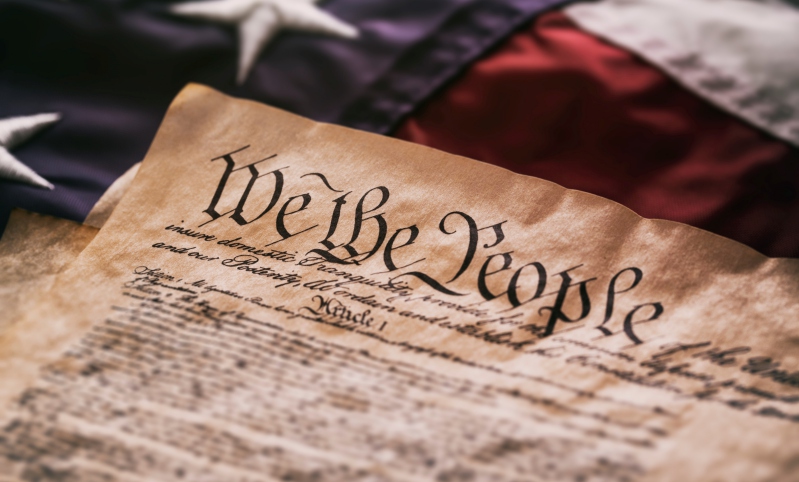
Scholar investigates an early exercise of federal administrative power that mirrors modern agency rulemaking.
The legitimacy of the administrative state appears to be in some jeopardy. Five justices of U.S. Supreme Court have conveyed skepticism toward agency authority to regulate private conduct. This skepticism by a majority could lead the Court to reinvigorate the nondelegation doctrine, which limits congressional delegation to agencies.
But in a recent paper, Yale Law School Professor Nicholas R. Parrillo argues that a sweeping delegation of rulemaking power is nothing new—and that the U.S. Constitution’s original authors and interpreters endorsed agency power.
Parrillo focuses on a specific example from the early history of the United States. In 1798, Congress passed a federal property tax. To administer the tax, Congress delegated power to federal boards established in each state, which oversaw what was the largest “non-military undertaking of the Constitution’s first two decades.” The federal boards set rules for valuing real estate, and these rules formed the basis for determining the taxes owed by each property owner.
Parrillo explains that these federal boards had extensive authority to allocate the tax burden across constituencies in a given state. The allocation occurred in stages, with frontline assessors performing initial valuations. The boards in each state made revisions to those valuations “as shall appear just and equitable,” according to the statute authorizing the federal board’s action.
The revision power was potent, Parrillo argues. For instance, the federal board in Maryland revised property valuations of all houses in Baltimore, raising those values by 100 percent and leaving nearly all others unchanged.
Parrillo claims that these valuation and revision powers are quintessential examples of rulemaking authority by federal administrators. In particular, he notes that the revision power of the federal tax boards is analogous to the tax-setting powers at issue in Bi-Metallic Investment Co. v. State Board of Equalization, a case that scholars use to define rulemaking.
Parrillo articulates several other similarities of the boards’ work to modern rulemaking.
Similar to more recent delegations, Congress in 1798 gave federal boards wide latitude in decision-making. Boards could revise valuations so long as their decisions were “just and equitable.” Parrillo contends that this vague standard did not have any more specific definition. Land valuations were indeterminate, with discretion given to federal boards overseeing taxation in each state.
Federal board decisions were also highly political, Parrillo explains. Distributions of land value, and corresponding tax liability, were contested, and these allocations across a state pitted constituencies against each other. In South Carolina, for instance, the decisions of the federal board surfaced “the longstanding struggle between the rich coastal planters and the poor backcountry in that state.”
Key decisions by federal boards were not only discretionary and political, but they also were not subject to review except as provided by statute. Administrators, not judges, handled appeals. Administrative action was final.
Despite the discretionary, political, and unreviewable nature of board action, the authority of federal boards received support from both major political parties at the time—the Federalists and the Republicans—and was accepted even by President Thomas Jefferson himself.
The two pieces of legislation that created the boards passed with bipartisan support. And when President Jefferson took office, he ensured the boards could continue and complete their work.
Most importantly, neither party raised constitutional concerns. Parrillo contends that the records of Congress show “an absence of recorded constitutional objections.” And, as for conversation in the press at the time, concerns about constitutionality were minimal: Parrillo characterizes any objections to constitutionality of delegation to federal boards as “oblique and scattered.”
Parrillo infers from this lack of constitutional objections that the nation’s founders accepted the constitutionality of this expansive grant of rulemaking power.
Parrillo points out that this historical inference contradicts the accounts offered in recent years by Justice Clarence Thomas, a noted “originalist” whose constitutional interpretations rest on reconstructing initial understandings of the Constitution’s meaning. In his concurrence in Department of Transportation v. Association of American Railroads, for example, Justice Thomas claimed that the original understanding of the Constitution prohibits Congress from giving the executive branch the power to issue “generally applicable rules of private conduct.”
Five justices of the Supreme Court—as evidenced by justices joining a concurrence and a dissent authored by Justice Gorsuch—have suggested that they are open to considering Justice Thomas’s historical account as a grounding for invalidating administrative action.
Parrillo notes that “originalist skeptics” have explained away other early grants of rulemaking power as limited to voluntary transactions or foreign affairs. But the federal tax boards made decisions that affected the private rights of U.S. citizens, just like modern domestic rulemaking.
Contradicting historical claims put forth by Justice Thomas, Parrillo concludes that “originalist skeptics of rulemaking are mistaken to say that no early congressional grant of rulemaking power was coercive and domestic.”



